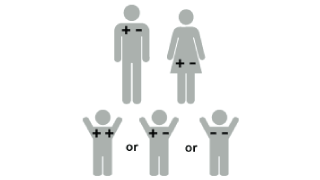
Yoga and Stress: The blood type A safety valve The key is moderation, and blood type helps set some of the limits to the envelope and can act as a guide to allow you to use exercise to improve your health. Exercise past the envelope and you might actually be adding more stress into the equation.

The key factor in exercise is to train within the envelope so exercise can act as an anti-stress mechanism. On the other hand, a blood type O who is already in the exhaustion stage because of accumulated stress, should not consider intense exercise as currently being in their best interest. All other factors being equal, this envelope is smallest for type A's, but with proper "conditioning" a blood type A individual can excel in these more strenuous activities. The area to focus on is your relative capabilities before you exceed your current envelope. Blood type Os are welcome to do yoga, while many blood type As respond very well to lifting weights or aerobic activities. With exercise it is not a question of all or none. This is why one can find a well-conditioned type A having a bigger envelope for exercise than a poorly conditioned type O. They have conditioned their physiology, their nervous system and their endocrine system, and so are not experiencing even a high level of exercise as a stress. Generally speaking, elite or experienced athletes do not experience exercise internally as a stressful event, even if they slightly push past their normal training routine. This process could be described by the term 'conditioning'. However, following a period of training, most people will produce less stress hormones in response to exercise. In a simplified sense, physical activity, even when it is not exhaustive, usually leads to elevated blood levels of stress hormones like catecholamines and cortisol. One of the factors that will influence this envelope is blood type. Factors like proper nutrition, hydration, rest, prior training, level of fitness, overall levels of stress in other parts of your life, and many other factors can influence your envelope. Many factors interact to determine your envelope of tolerance for exercise. Let's take a look at two imaginary people and their exercise routine to get a better understanding. Does this sound familiar? It should because over training acts just like stress on your internal balance.

When you are over trained your performance declines. But what happens if you consistently push beyond this envelope, exceeding your tolerance levels and your ability to adapt? The classic manner to describe this is over-training. Consistently pushing the limit of this envelope is where the most progress occurs when trying to improve performance. It acts as a safety valve to let off extra steam. Train within the envelope and exercise is a great method for managing or releasing stress. However, this is not always the case.Įveryone has an envelope of tolerance for exercise. Because of this, exercise is often described as a panacea when it comes to moderating against stress or helping to de-stress. A moderate amount of physical activity on a consistent basis will also tend to reduce the overall stress response. A high level of physical fitness will definitely allow the nervous system to recover more rapidly from stress.

Your blood type is a critical component in the determination of your ability to meet the demands.Įxercise is a mixed blessing when it comes to stress. In its most simplified sense, stress is what you feel when the demands on your life exceed your ability to meet those demands. Blood Group Genetics, Exercise and Stress


 0 kommentar(er)
0 kommentar(er)
